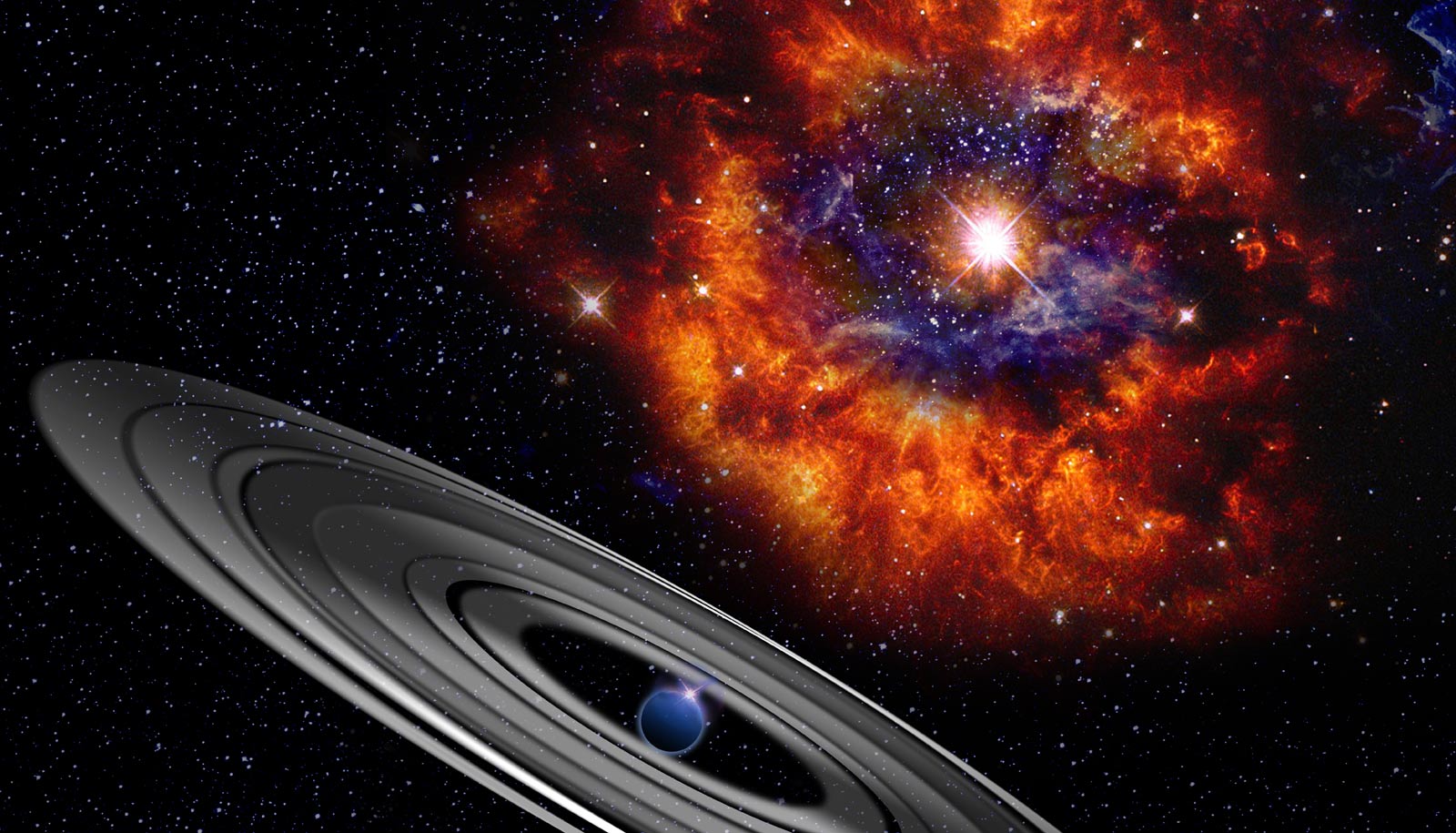A giant gas planet—up to fifty times the mass of Jupiter, encircled by a ring of dust—is likely hurtling around a star more than a thousand light years away from Earth.
Scientists identify that a large object regularly blocks the light from this rare young star—and predict that this as-yet undiscovered planet causes these eclipses.
Using data from the Wide Angle Search for Planets (WASP) and Kilodegree Extremely Little Telescope (KELT), the scientists analyzed fifteen years of the star’s activity and discovered that every two and a half years, the light from this distant star—PDS 110 in the Orion constellation, which is same temperature and slightly larger than our sun—is reduced to thirty percent for about two to three weeks. Two notable eclipses were observed in November 2008 and January 2011.

“What’s exciting is that during both eclipses we see the light from the star change rapidly, and that suggests that there are rings in the eclipsing object, but these rings are many times larger than the rings around Saturn,” says Matthew Kenworthy, an astronomer at the Leiden Observatory.
Eclipse that lasts more than 3 years smashes record
Assuming the dips in starlight are coming from an orbiting planet, the next eclipse is predicted to take place in September this year—and the star is bright enough that amateur astronomers all over the world will be able to witness it and gather new data. Only then will we be certain what is causing the mysterious eclipses.
If confirmed in September, PDS 110 will be the first giant ring system that has a known orbital period.
“September’s eclipse will let us study the intricate structure around PDS 110 in detail for the first time, and hopefully prove that what we are seeing is a giant exoplanet and its moons in the process of formation,” says Hugh Oborn, a researcher with the Astrophysics Group at the University of Warwick.
The researchers suggest that there are moons could be forming in the habitable zone around PDS 110—pointing to the possibility that life could thrive in this system.
The eclipses can also be used to discover the conditions for forming planets and their moons at an early time in the life of a star, providing a unique insight into forming processes that happened in our solar system.
The study appears in the Monthly Notices of the Royal Astronomical Society.
Source: University of Warwick



